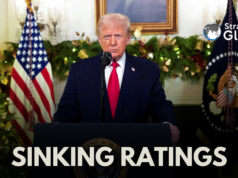U.S. Defense Secretary Pete Hegseth is set to tour the Panama Canal on Tuesday, beginning a rare visit to a Central American nation still uneasy over President Donald Trump’s threats to reclaim control of the waterway.
Hegseth, the first U.S. defense secretary to visit in decades, arrives at a particularly delicate moment as Panama wrestles with deep U.S. concerns about Chinese commercial investments around the canal.
He is also visiting following reports that the Trump administration has requested options from the U.S. military to ensure access to the canal, which the United States built more than a century ago and handed over to Panama in 1999.
Given Trump’s tough rhetoric about retaking the canal, the stakes are high for Hegseth’s visit.
US-Panama Security Relationship
Panama will be watching for signs of the direction he wants to take the U.S.-Panama security relationship, and for the canal itself, along which the United States once had a network of military bases.
“On the whole, this hasn’t been a winning issue for the United States in terms of public diplomacy in Panama,” said Ryan Berg, director of the Americas Program at the Center for Strategic and International Studies.
Till, current and former U.S. officials and experts say the United States has found a willing partner in tackling Chinese influence in Panama’s president, Jose Raul Mulino.
BRI Exit
In February, Mulino announced Panama’s formal move to exit China’s Belt and Road Initiative, and he has aided Trump’s crackdown on migrants.
He has accepted deportation flights of non-Panamanians and worked to stem migration from South America by those crossing through his country’s dangerous Darien jungle.
Hegseth made no public remarks as he arrived in Panama late on Monday.
But he has enthusiastically backed Trump’s southern-focused security agenda, by means such as dispatching U.S. troops to the U.S. border with Mexico and offering military aircraft for deportation flights.
Trump has falsely claimed that China is operating the canal and that Chinese soldiers are present.
But experts acknowledge U.S. security concerns, particularly regarding espionage, with an expansive Chinese commercial presence in Panama that also includes plans by Chinese firms to build a bridge over the canal.
BlackRock Deal
Last month, Trump celebrated a deal led by U.S. firm BlackRock to buy most of the $22.8-billion ports business of Hong Kong conglomerate CK Hutchison, including its ports on either end of the Panama Canal.
Trump said the purchase was an example of how the United States was “reclaiming” the canal.
But China has criticized it, with the market regulator saying it will carry out an antitrust review of the deal.
Current and former U.S. officials say the Panama Canal would be critical for the passage of U.S. warships during any future conflict in Asia, since Navy vessels would transit from the Atlantic to the Pacific to support the war effort.
China’s Advantage
Even without blocking the canal, China could have an enormous advantage by being able to surveil vessels passing through it.
Still, John Feeley, who was U.S. ambassador to Panama from 2015 to 2018, disputed the Trump administration’s assertion that China’s presence in Panama was a violation of the U.S.-Panama treaty.
“What’s not legitimate about the way Trump has gone about this is the bullying tactic that he’s used, which is to claim that there has been a violation of the neutrality treaty. There hasn’t been,” Feeley said.
Mulino has defended Panama’s administration of the canal, saying it has been handled responsibly for world trade, including that of the United States, and that it “is, and will continue to be, Panamanian.”
More than 40% of U.S. container traffic, valued at roughly $270 billion a year, transits the Panama Canal, accounting for more than two-thirds of vessels passing each day through the world’s second-busiest interoceanic waterway.
(With inputs from Reuters)





